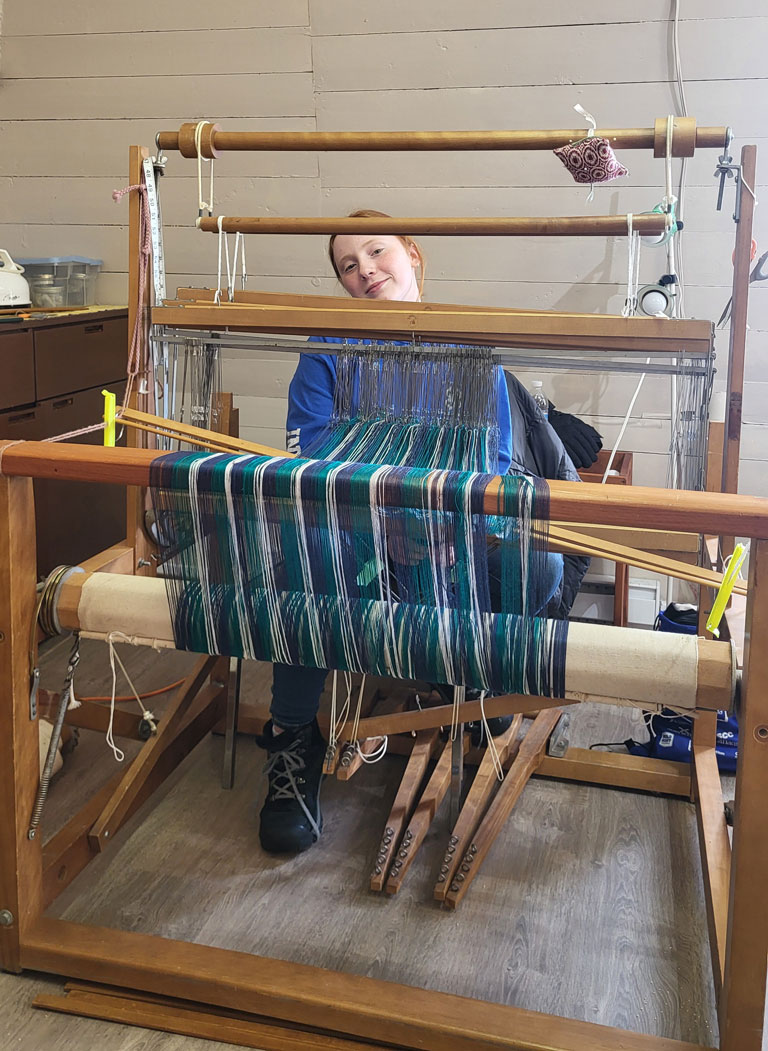Christena M.

Weaving the Past with the Present
Christena M.
Strait Regional Centre for Education Heritage Fair
Port Hawkesbury, NS
I started weaving two years ago and recently joined the Glendale Weavers Guild in Cape Breton Nova Scotia. I had gotten really into it over the winter. With the help of my experienced mentor, Dianne Quimby, I wove a tartan to represent my family name. I applied to have it registered through the Tartan Register of Scotland. As I continued to develop my skills, it became important to me to learn more about the tradition. I did a lot of research, was able to interview Dianne and was given a very important book by another lady I weave with. I learned so much about how weaving shaped our Gaelic culture. It was important to survival, and later self-expression. The early settlers brought important knowledge with them. They worked hard to find plants, shear sheep, clean, dye and spin the wool. They would mill the cloth at milling frolics, singing songs that brought people together and passed on the culture. They built the looms that their blankets and clothes were made on. Weaving was and still is a complicated process. The weaver had to know the pattern, prep the string, dress the loom and have the patience to finish the piece. My final response to my question is that the significance of weaving in both Canadian and Gaelic culture is pretty big. The tradition represents the dedication that our ancestors had to survive and to be creative. It is no wonder that it is still alive today. I love that I now understand the history of this amazing art and how it has evolved over the years.
What sources and evidence did you consult for your project? What different perspectives did they provide on your topic?
I consulted books on the History of weaving and books that were more about the art. I Interviewed my mentor who is a certifi ed master weaver. She knows so much about the art and history of weaving. It was the perfect fit. I am volunteering at Highland Village (historical Gaelic settlement) in Cape Breton and hope to learn even more about the historical perspectives and weaving methods.
 Christena using a loom to weave a tartan.
Christena using a loom to weave a tartan.
What is the historical significance of your topic?
Weaving has evolved as technology develops. It has changed a lot over time. For example, there are apps like the one I used to generate my tartan and machines that weave most of the things we wear. The historical significance is huge. Where would be without the early methods our ancestors used? Also, there are still weavers like Dianne and guilds who do everything by hand. These will remain significant as people continue to learn about tradition and culture.
Why did you choose this topic?
I chose it because I love weaving and I love Gaelic.

